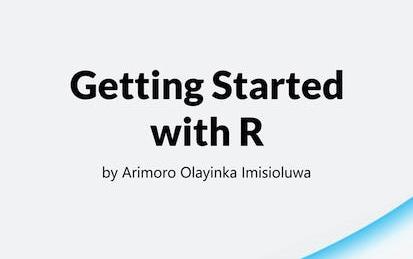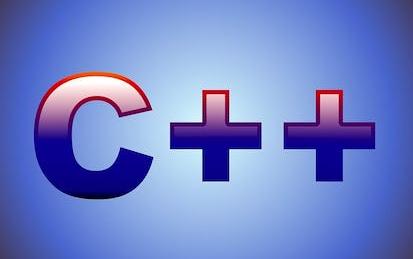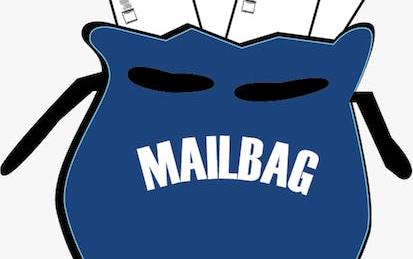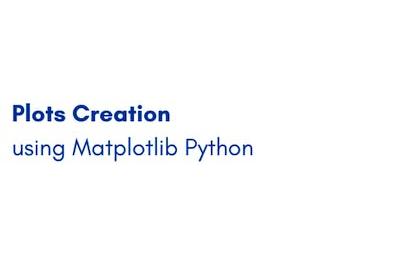

Our Courses

Getting Started with R
In this 2 hour-long project, you will learn the basics of R programming language. In addition, you will take your first steps in the use of R programming language for Data Analysis. By the end of this 2-hour long project, you will understand how to use the R GUI called R studio. By extension, you will learn the different data types and data structures used in R. Finally, you will learn how to install packages and how to import data sets into the R studio work space. This course is aimed at learners who are looking to get started with the R programming language.
-
Course by

-
 Self Paced
Self Paced
-
 4 hours
4 hours
-
 English
English

Scripting with Python and SQL for Data Engineering
In this third course of the Python, Bash and SQL Essentials for Data Engineering Specialization, you will explore techniques to work effectively with Python and SQL. We will go through useful data structures in Python scripting and connect to databases like MySQL. Additionally, you will learn how to use a modern text editor to connect and run SQL queries against a real database, performing operations to load and extract data. Finally, you will use extracted data from websites using scraping techniques.
-
Course by

-
 Self Paced
Self Paced
-
 18 hours
18 hours
-
 English
English

Data Structures & Algorithms I: ArrayLists, LinkedLists, Stacks and Queues
Work with the principles of data storage in Arrays, ArrayLists & LinkedList nodes. Understand their operations and performance with visualizations. Implement low-level linear, linked data structures with recursive methods, and explore their edge cases. Extend these structures to the Abstract Data Types, Stacks, Queues and Deques.
-
Course by

-
 English
English

Data Structures & Algorithms II: Binary Trees, Heaps, SkipLists and HashMaps
Become familiar with nonlinear and hierarchical data structures. Study various tree structures: Binary Trees, BSTs and Heaps. Understand tree operations and algorithms. Learn and implement HashMaps that utilize key-value pairs to store data. Explore probabilistic data structures like SkipLists. Course tools help visualize the structures and performance.
-
Course by

-
 Self Paced
Self Paced
-
 English
English

Data Structures & Algorithms III: AVL and 2-4 Trees, Divide and Conquer Algorithms
Learn more complex tree data structures, AVL and (2-4) trees. Investigate the balancing techniques found in both tree types. Implement these techniques in AVL operations. Explore sorting algorithms with simple iterative sorts, followed by Divide and Conquer algorithms. Use the course visualizations to understand the performance.
-
Course by

-
 Self Paced
Self Paced
-
 English
English

C++ Data Structures in the STL
In this project you will read weather data from a file and populate a C++ Vector with the file data. The data is then uniquified in a Set data structure and stored in a Map for accessing data by year. C++'s standard template library or STL contains data structures or containers that are built for efficiency. They are used to store and retrieve data in various formats. A list such as a Vector can be used in place of an array to contain data where the size cannot be determined ahead of time.
-
Course by

-
 Self Paced
Self Paced
-
 3 hours
3 hours
-
 English
English

How to Code: Complex Data
Learn how to design more complex programs, using new data structures, abstraction, and generative recursion.
-
Course by

-
 English
English

Data Structures Fundamentals
Learn about data structures that are used in computational thinking – both basic and advanced.
-
Course by

-
 Self Paced
Self Paced
-
 English
English

Algorithms and Data Structures Capstone
Synthesize your knowledge of algorithms and biology to build your own software for solving a biological challenge.
-
Course by

-
 Self Paced
Self Paced
-
 English
English

R Programming Basics for Data Science
This course introduces you to R language fundamentals and covers common data structures, programming techniques, and how to manipulate data all with the help of the R programming language.
-
Course by

-
 13
13
-
 English
English

Dart: Variables, Data Structures, Objects, and Conditionals
This is a self-paced lab that takes place in the Google Cloud console. In this lab you will learn more about the basics of Dart. Build on your knowledge of Dart development…
-
Course by

-
 Self Paced
Self Paced
-
 English
English

Inheritance and Data Structures in Java
This course provides a comprehensive look at Java inheritance, including access modifiers and overriding methods. Students are introduced to abstract classes, and will learn how to read and write to files, use regular expressions for parsing text, and how to leverage complex data structures like collections and maps. Additionally, this course offers strategies for catching errors and debugging code, including an overview of Eclipse’s debugging tool.
-
Course by

-
 Self Paced
Self Paced
-
 21 hours
21 hours
-
 English
English

Applying Data Structures to Manipulate Cleansed UN Data
In this 1-hour long project-based course, you will discover optimal situations to use fundamental data structures such as Arrays, Stacks, Queues, Hashtables, LinkedLists, and ArrayLists.
-
Course by

-
 Self Paced
Self Paced
-
 2 hours
2 hours
-
 English
English

Approximation Algorithms
Many real-world algorithmic problems cannot be solved efficiently using traditional algorithmic tools, for example, because the problems are NP-hard. The goal of the Approximation Algorithms course is to become familiar with important algorithmic concepts and techniques needed to effectively deal with such problems. These techniques apply when we don't require the optimal solution to certain problems, but an approximation that is close to the optimal solution. We will see how to efficiently find such approximations.
-
Course by

-
 Self Paced
Self Paced
-
 15 hours
15 hours
-
 English
English

Computing in Python III: Data Structures
Learn more complex ways of handling data, including files, lists, and dictionaries for building complex programs.
-
Course by

-
 Self Paced
Self Paced
-
 English
English

Intro to Operating Systems 3: Concurrency
Learn the inner workings of operating systems without installing anything! This course is designed for learners who are looking to maximize performance by understanding how operating systems work at a fundamental level. The modules in this course cover concurrency, threads, locks, locking data structures and multi-CPU scheduling. To allow for a truly hands-on, self-paced learning experience, this course is video-free. Assignments contain short explanations with images and runnable code examples with suggested edits to explore code examples further, building a deeper understanding by doing.
-
Course by

-
 Self Paced
Self Paced
-
 7 hours
7 hours
-
 English
English

Dynamic Programming, Greedy Algorithms
This course covers basic algorithm design techniques such as divide and conquer, dynamic programming, and greedy algorithms. It concludes with a brief introduction to intractability (NP-completeness) and using linear/integer programming solvers for solving optimization problems. We will also cover some advanced topics in data structures. This course can be taken for academic credit as part of CU Boulder’s MS in Data Science or MS in Computer Science degrees offered on the Coursera platform.
-
Course by

-
 Self Paced
Self Paced
-
 38 hours
38 hours
-
 English
English

Analytical Solutions to Common Healthcare Problems
In this course, we’re going to go over analytical solutions to common healthcare problems. I will review these business problems and you’ll build out various data structures to organize your data. We’ll then explore ways to group data and categorize medical codes into analytical categories. You will then be able to extract, transform, and load data into data structures required for solving medical problems and be able to also harmonize data from multiple sources. Finally, you will create a data dictionary to communicate the source and value of data.
-
Course by

-
 Self Paced
Self Paced
-
 11 hours
11 hours
-
 English
English

Get Started with Python
This is the second of seven courses in the Google Advanced Data Analytics Certificate. The Python programming language is a powerful tool for data analysis. In this course, you’ll learn the basic concepts of Python programming and how data professionals use Python on the job. You'll explore concepts such as object-oriented programming, variables, data types, functions, conditional statements, loops, and data structures.
-
Course by

-
 Self Paced
Self Paced
-
 31 hours
31 hours
-
 English
English

Python for Beginners: Data Structures
This Guided Project "Python for Beginners: Data Structures" is for individuals who are new to programming and want to learn the basics of Python data structures. In this 2-hour long project-based course, you will learn about lists, tuples, sets, and dictionaries and how to use them to solve real-world problems through a student performance analysis short project.
-
Course by

-
 Self Paced
Self Paced
-
 3 hours
3 hours
-
 English
English

Process Map Data using C++ Adjacency List Shortest Path
In this project you will use the adjacency list data structure and other data structures to find the shortest distance between a set of towns loaded from a file. The shortest path problem is well known in the field of computer science. An adjacency list is probably the best data structure to represent a set of connected vertices to find the shortest path from one vertex to another. One application for shortest paths is in computer networking routing.
-
Course by

-
 Self Paced
Self Paced
-
 2 hours
2 hours
-
 English
English

Automating your BigQuery Data Pipeline with Cloud Dataprep
This is a self-paced lab that takes place in the Google Cloud console. In this lab, you will examine how Dataprep can be used on complicated data structures in BigQuery.
-
Course by

-
 Self Paced
Self Paced
-
 1 hour
1 hour
-
 English
English

Plots Creation using Matplotlib Python
By the end of this project, you will be able to add the data in the CSV file to Pandas data frame, plot the graph, and set marker type and color. You will also be able to apply labels, change font size, add grid lines and legends. Finally, you will be able to create the boxplot and save the graph as an image using the matplotlib and seaborn libraries, which are the most important libraries in python that are used for Data Visualization. You can create bar-plots, scatter-plots, histograms, and a lot more with them. This guided project is for people in the field of data and data analysis.
-
Course by

-
 Self Paced
Self Paced
-
 3 hours
3 hours
-
 English
English

Data Science with NumPy, Sets, and Dictionaries
Become proficient in NumPy, a fundamental Python package crucial for careers in data science. This comprehensive course is tailored to novice programmers aspiring to become data scientists, software developers, data analysts, machine learning engineers, data engineers, or database administrators. Starting with foundational computer science concepts, such as object-oriented programming and data organization using sets and dictionaries, you'll progress to more intricate data structures like arrays, vectors, and matrices.
-
Course by

-
 Self Paced
Self Paced
-
 31 hours
31 hours
-
 English
English

Coding Interview Preparation
The final course in this program will help prepare you for the unique aspects of a coding job interview, with approaches to problem-solving and computer science foundations needed to land the job. Ultimately you’ll gain strategic insights and tips for successful interviewing.
-
Course by

-
 Self Paced
Self Paced
-
 12 hours
12 hours
-
 English
English



